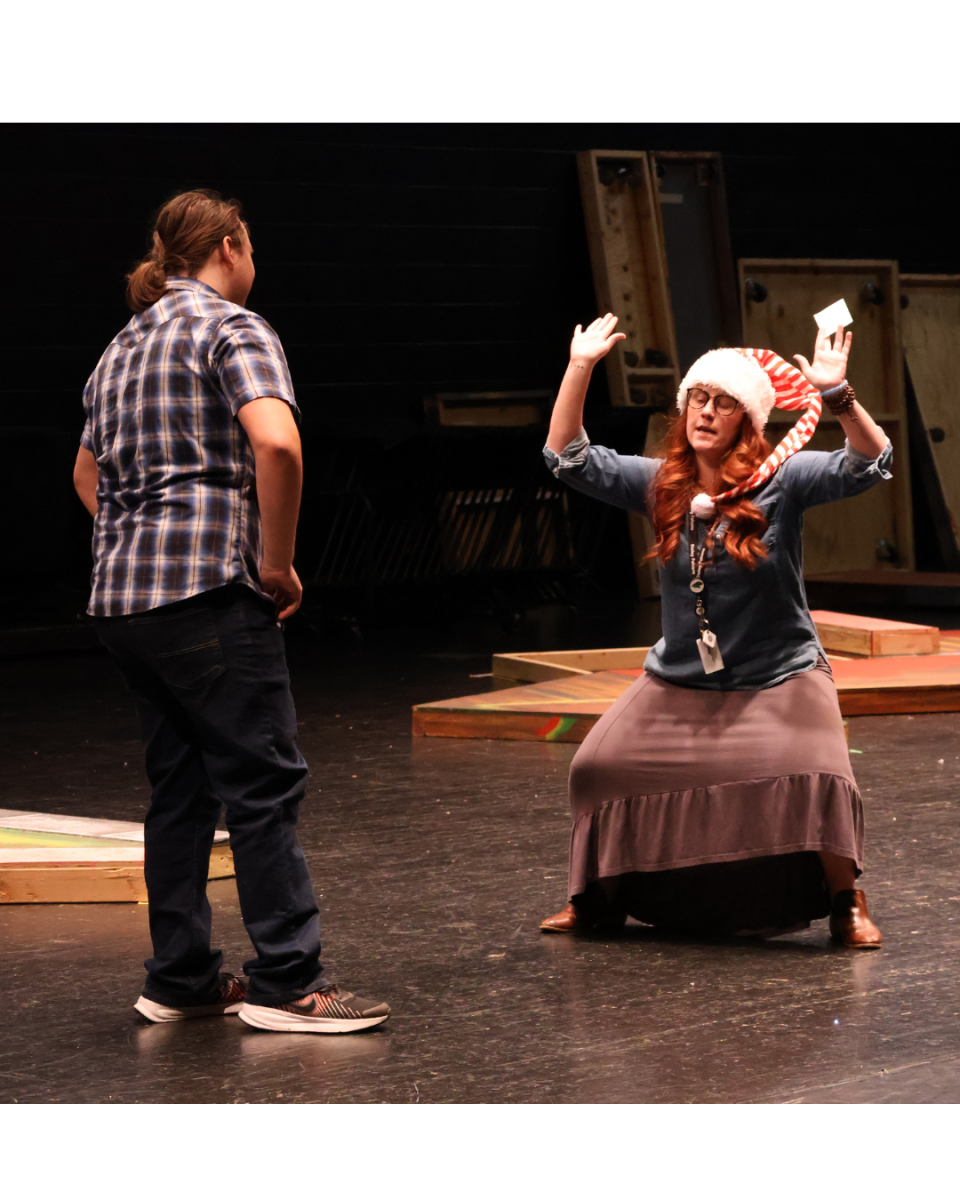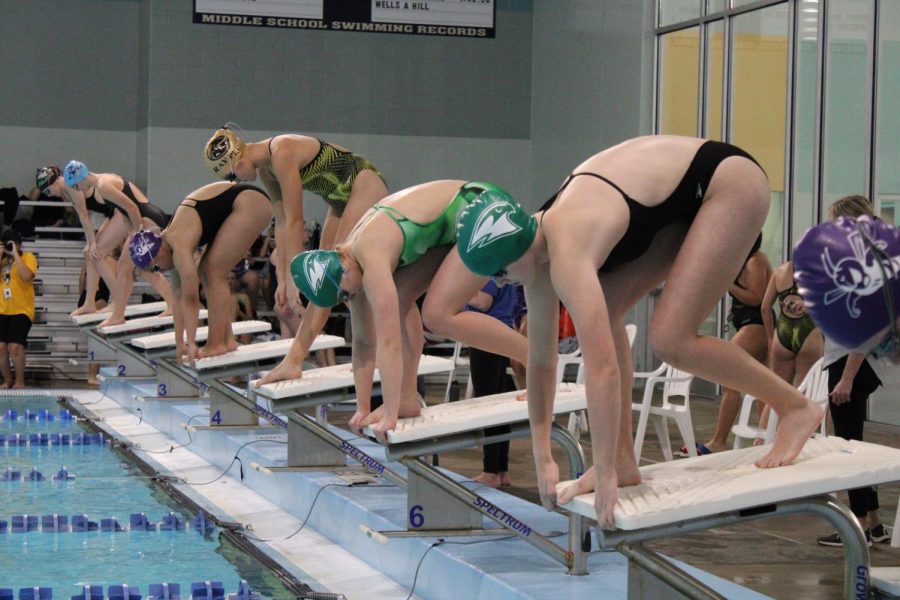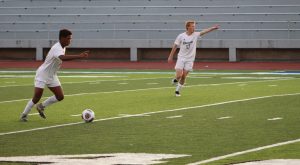Athletes Avoid Rest, End Up With Overtraining Injuries
Injuries More Common In Anaerobic Sports
Swimmers prepare to dive in Dec. 6 at the Gladstone Community Center natatorium.
It’s easy to assume that extra training is essential to improving performance, and while that is true, it’s easy to do too much. 30% to 65% of athletes will become overtrained at least once in their career, according to the National Institute of Health..
Freshman swimmer Jacey McGraw has been swimming competitively for eight years. She, like many other athletes, said she has experienced an injury due to overtraining. Specifically, she suffered from tendonitis and meniscus issues, both are very common injuries caused by overuse..
“I pushed myself too hard after being inactive due to COVID,” McGraw said. “It started as overuse in one knee, but soon after, it became both. Because I waited to go to the doctor’s, it only continued to get worse.”
Similar to McGraw, freshman Emma Rayl’s season was shortened by overuse. Rayl grew up swimming and currently swims on the school’s team.
“My IT band was too tight,” Rayl said. “It felt like a rubber band and hurt all the time, so I had to quit swimming for a while.”
She started swimming again as soon as she could.
“What helped me the most is using a massage gun and rest,” Rayl said.
The American Academy of Pediatrics recommends seeking help early and limiting playing time to reduce the effects of an overtraining injury.
“The first and hardest thing to do is rest,” school trainer Alena Nelson said. “It’s really hard to get something better if we’re continuing to hurt it. It’s usually taking at least a few days off if I can’t get them to take any more than that. And then it’s starting exercises, stretches, anything that’s going to get them going in the right direction.”
About 46% to 54% of injuries in sports are caused by overuse. While the prevalence of overtraining depends on the sport, almost all injuries caused by overuse are completely preventable, the Sports Medicine Institute of South Carolina reported.
But there are sports that produce the most cases of overtraining and overuse injuries.
“You see a lot of the more serious injuries in baseball pitchers,” Nelson said. “Especially in the elbows. You can see a lot of overuse in swimmers with bad shoulders, and things like that require surgery.”
Overtraining injuries are more common in anaerobic sports – those that involve quick bursts of energy and are performed at maximum effort for a short time. In order to avoid an overtraining injury, athletes should be wary of training too hard or too fast and should give themselves breaks.



































